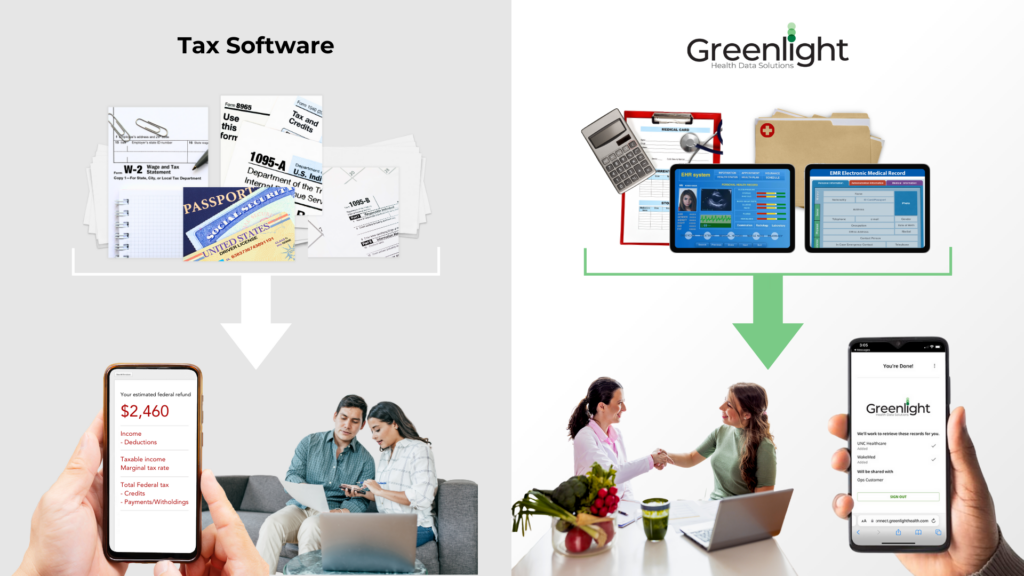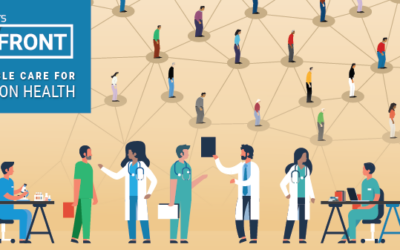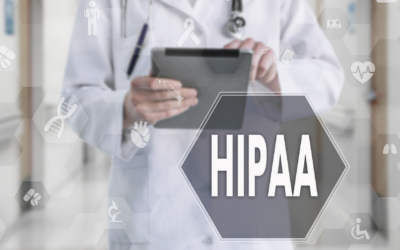By: Cristina Spears, Senior Special Projects Manager
If you think tax filings and medical records have absolutely nothing in common, you would be dead wrong! The common denominator is that they’ve shifted away from being predominantly paper-based to digital-based within the past 25 years.
For individual tax returns, 93.8% were filed electronically in 2022. Providers using Electronic Health Record (EHR) systems are at a nearly identical statistic, hovering in the mid-90% range. However, there’s one stark difference. Unlike individuals having electronic access to their financial institutions for decades, patients have just recently been given access to their EHR data because of the CURES Act and Information Blocking Rule finalized in October of 2022. Let’s think through the countless possibilities of where we can go now that patients’ access to digital health records can advance innovation.
Synchronous Connections
If you are one of those electronic tax filers this season, you are likely to use companies such as TurboTax, H & R Block, or other tax filing services. Whether you are reporting your income and prepaid taxes and deductions from your employer, interest income from your bank account or capital gains/losses from your brokerage account, tax filing services allow you to securely connect and import the appropriate tax information. It is an automated process embedded into an intuitive workflow.
When it comes down to patient-mediated EHR data sharing, will healthcare, insurance and life sciences embrace automation, like TurboTax has done to connect financial data?
Unlike the dreaded annual tax filing, the need for medical records is not seasonal, they’re requested 24/7/365. Every day, someone needs to receive or send someone else their medical records for a myriad of reasons. The healthcare industry needs records to process referrals for patient intake and care coordination. Disability and workers’ comp insurers need records to determine coverage and adjudicate claims. Life sciences need medical records to secure eligible research study participants and so on.

Embracing Innovation
When it comes to sharing medical records, the approach can be nearly identical to connecting to your financial institutions for tax filing purposes. Greenlight allows users to securely connect and share their data into our partner’s automated process embedded in a logical and intuitive workflow.
It’s 2024, not 1984! Medical record exchange using paper-based workflows is time-consuming, expensive and inefficient for everyone, especially patients. If you have been diagnosed with cancer and referred to an oncologist, you don’t want the medical record review process to impede your access to getting an appointment. If you are filing a disability claim, you don’t want it to take weeks for claim processing because of delays in getting your medical records to the insurer. If you want to participate in a clinical trial or research study, you don’t want to wait weeks for medical records to determine if you are qualified for the study.
With Greenlight, record exchange takes place in minutes, not weeks, and it’s a fraction of the cost of traditional medical record retrieval. The patient controls the process of authorizing access to their medical records, just like at tax time when they authorize connecting to their financial institutions to import data into TurboTax.
Go Greenlight, let’s get patients’ records moving!



